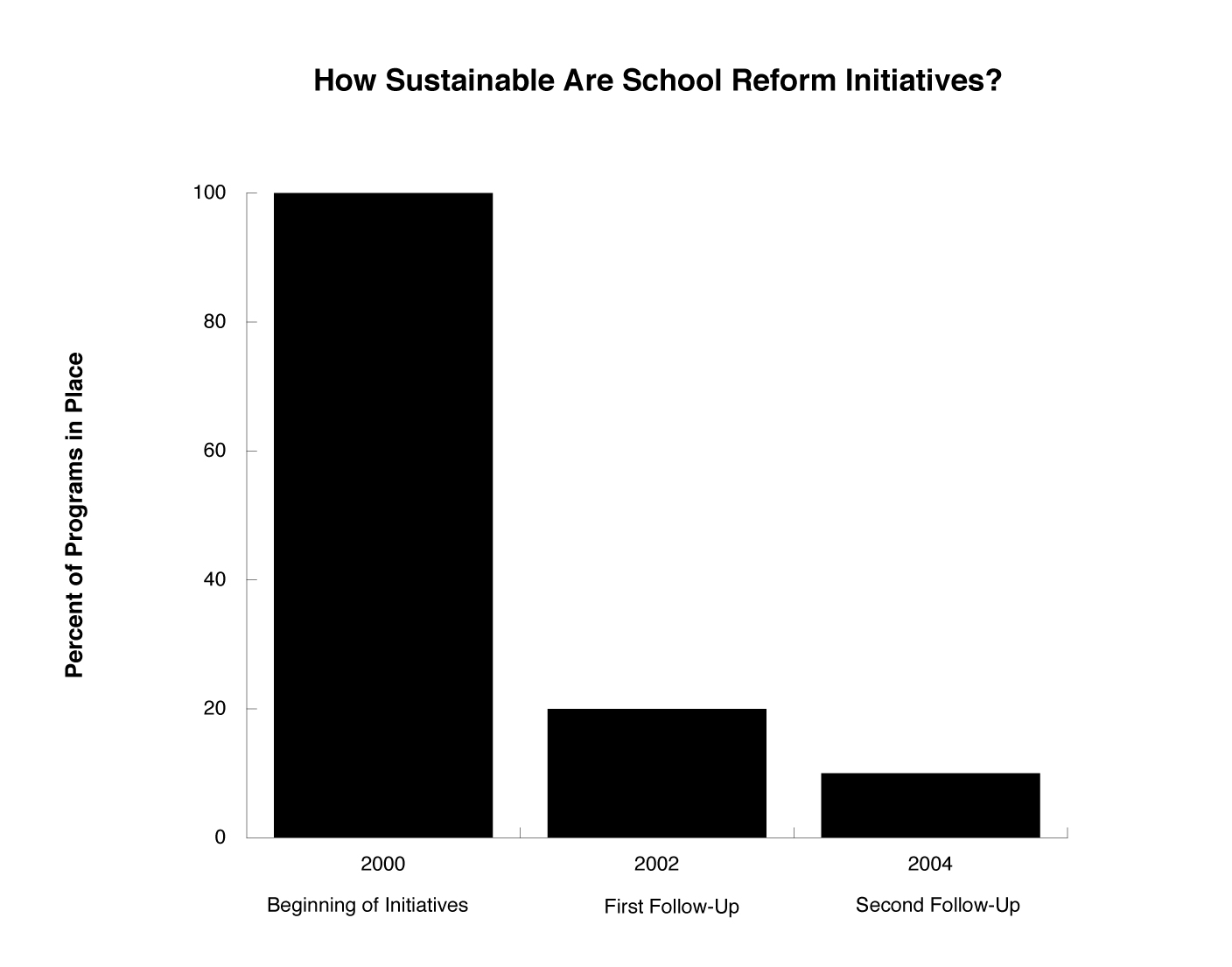How long do reform initiatives last in public schools?
Why is this question important? Each year schools and school districts begin reform initiatives to improve academic and social-emotional outcomes for students. According to a 2005 report by Fixsen, Naoom, Blase, Friedman, and Wallace, the consensus among systems researchers was that it takes 2 to 4 years for a new initiative to be fully implemented and operational across a school or district. In 1988, Latham reported that most innovations in schools have a life span of 1½ to 4 years. Thus, many reforms are abandoned before full implementation, when the broadest impact would be expected. Many factors contribute to the short life span of a reform; for example, site readiness, professional development, technical assistance, and implementation and sustainability planning (Elliott & Mihalic, 2004). The bottom line is that the decision to abandon a new initiative before it has time to take hold comes at enormous cost in materials and staff time as well as in failing to achieve the full benefits of the reform.
See further discussion below.

Source:
Results: Each year schools and school districts begin reform initiatives to improve academic and social-emotional outcomes for students. According to a 2005 report by Fixsen, Naoom, Blase, Friedman, and Wallace, the consensus among systems researchers was that it takes 2 to 4 years for a new initiative to be fully implemented and operational across a school or district. In 1988, Latham reported that most innovations in schools have a life span of 1½ to 4 years. Thus, many reforms are abandoned before full implementation, when the broadest impact would be expected. Many factors contribute to the short life span of a reform; for example, site readiness, professional development, technical assistance, and implementation and sustainability planning (Elliott & Mihalic, 2004). The bottom line is that the decision to abandon a new initiative before it has time to take hold comes at enormous cost in materials and staff time as well as in failing to achieve the full benefits of the reform.
Implications: The data reported by Aladjem and Borman (2006) are consistent with data reported by Latham (1988) and suggest that in the intervening 20 years we have not substantially improved our understanding of what is required for effective, sustainable implementation of school reform. The abandonment of most initiatives in 2 years or less comes at a tremendous cost to the educational system. Additionally, the cost to students is significant because in many cases effective programs are abandoned in favor of programs with much less empirical support. A more fully developed science and technology of implementation is necessary for successful educational reform.
Study Description: Aladjem and Borman identified schools that were starting a comprehensive school reform effort in 2000. In 2002 and 2004, they followed up with a telephone survey to determine if the schools were continuing to implement the reforms begun in 2000. No effort was made to determine how well the schools were implementing the initiatives; the survey just addressed how many of the schools were continuing to implement.
Citation:
* Aladjem, D. K., & Borman, K. M. (2006). Summary of findings from the national longitudinal evaluation of comprehensive school reform. Paper presented at the annual meeting of the American Educational Research Association, San Francisco, CA.
Elliott, D. S., & Mihalic, S. (2004). Issues in disseminating and replicating effective prevention programs. Prevention Science, 5(1), 47–53.
Fixsen, D. L., Naoom, S. F., Blase, K. A., Friedman, R. M., & Wallace, F. (2005). Implementation research: A synthesis of the literature. (FMHI Publication No. 231). Tampa, FL: University of South Florida, Louis de la Parte Florida Mental Health Institute, National Implementation Research Network.
Latham, G. I. (1988). The birth and death cycles of educational innovations. Principal, 68(1), 41–44.
* Study from which graphed data were derived.
